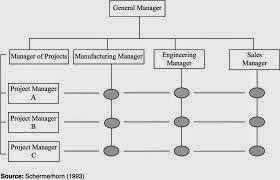TYPES OF PROCESS FLOW TECHNOLOGY
The flow technology of
the process used to make or deliver a product or service impacts facility
layout, resources, technology decisions, and work methods. The process
architecture may be an important component in the firm's strategy for building
a competitive advantage.
When characterized by
its flow structure, a process broadly can be classified either as a job shop
or a flow shop. A job shop process uses general purpose resources and is
highly flexible. A flow shop process uses specialized resources and the work
follows a fixed path. Consequently, a flow shop is less flexible than a job
shop.
Some suitable examples
in the process flow technology are as follows:
a) Project Technology - Example: building
construction
b) Job shop Technology - Example: print shop
c) Batch Technology - Example: bakery
d) Assembly line Technology
- Example: automobile production line
e) Continuous flow Technology - Example: oil refinery
The following sections
describe each of the architectures of process flow technology, highlighting
their differentiating characteristics.
a) Project
Technology
·
Flow - no flow
·
Flexibility - very
high
·
Products - unique
·
Capital investment -
very low
·
Variable cost - very
high
·
Labor content and
skill - very high
·
Volume - one
.
b) Job
Shop Technology
·
Flow - disorderly flow
·
Flexibility - high
·
Products - many
·
Capital investment -
low
·
Variable cost - high
·
Labor content and
skill - high
·
Volume - low
.
c) Batch
Process Technology
·
Flow - disconnected,
with some dominant flows
·
Flexibility - moderate
·
Products - several
·
Capital investment -
moderate
·
Variable cost -
moderate
·
Labor content and
skill - moderate
·
Volume - moderate
d) Assembly
Line Process Technology
·
Flow - related line
·
Flexibility - low
·
Products - a few
·
Capital investment -
high
·
Variable cost - low
·
Labor content and
skill - low
·
Volume - high
e) Continuous
Flow Process Technology
·
Flow - continuous
·
Flexibility - very low
·
Products - one
·
Capital investment -
very high
·
Variable cost - very
low
·
Labor content and
skill - very low, but with skilled overseers
·
Volume - very high


Comments